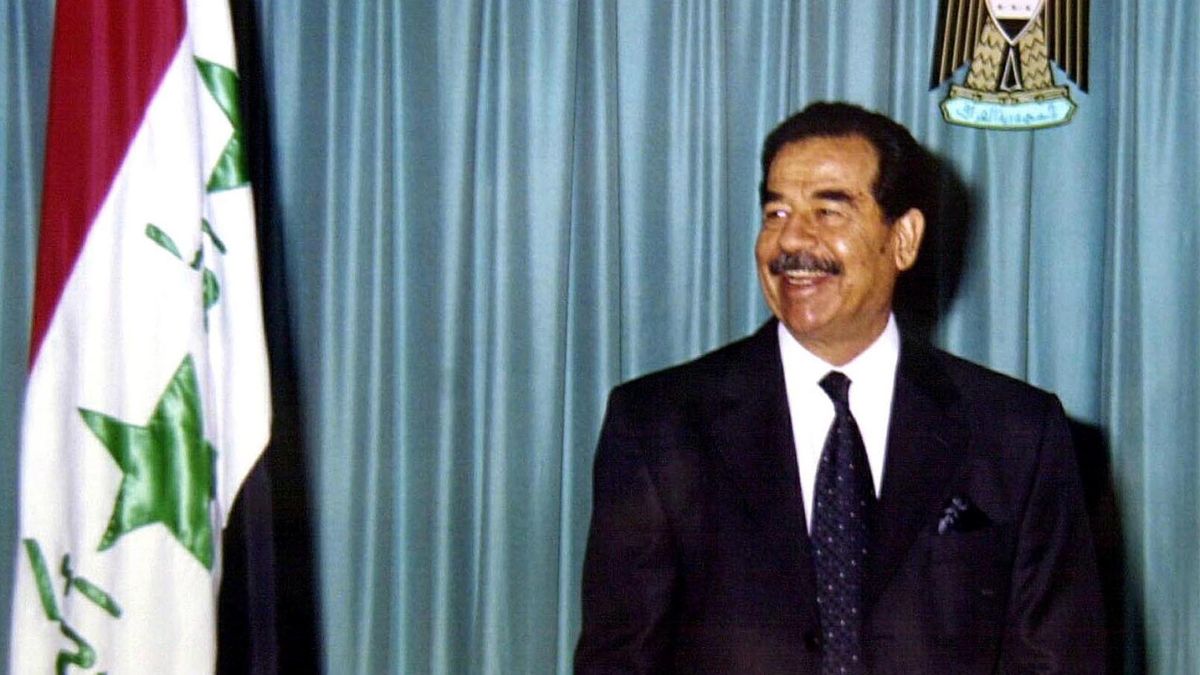Israel has warned Iran’s Supreme Leader Ayatollah Ali Khamenei “of a fate similar to Saddam Hussein” — the late Iraqi dictator. Israeli Defence Minister Israel Katz made the remarks on Tuesday (June 17) during a meeting with Israeli military and security service commanders.
“I warn the Iranian dictator against continuing to commit war crimes and launch missiles toward Israeli civilians,” he said, as per a statement from his office. “He should remember what happened to the dictator in the neighbouring country to Iran who took the same path against Israel.”
Katz’s comments come amid mounting tensions between Israel and Iran . The West Asian countries have launched strikes and counterstrikes against each other for six days now.
But who was Saddam Hussein and what fate did he meet? We will explain.
Who was Saddam Hussein?
Saddam Hussein ruled Iraq for nearly 30 years. Born into a poor family in the al-Awja village outside Tikrit, 150 km north of Baghdad, in 1937, he went on to join an uprising against pro-British royalist rulers at the age of 19.
As a member of the Baath Party, Saddam participated in a botched assassination attempt against Iraq’s military ruler, General Abd al-Karim Qasim, in October 1959.
Saddam, who was wounded in the attempt, fled – first to Syria and then to Egypt.
He returned to Baghdad after the Baath Party returned to power in a military coup in February 1963.
However, nine months later, the party was ousted and Saddam was imprisoned. He was made the deputy secretary-general of the Baath party while in jail.
In July 1968, the party toppled the rule of President Abdul-Rahman Aref in a coup. Saddam helped install his cousin, Ahmed Hassan al-Bakr, as Iraq’s president.
After serving as his cousin’s vice president, Saddam replaced al-Bakr to become Iraq’s president in 1979.
He ruled the country with an iron fist, suppressing anyone who opposed him. While most of the public lived in poverty, Saddam had a taste for luxury and built over 20 lavish palaces throughout Iraq.
To win public support, he provided universal healthcare, free university education, and equal rights for women, as per PBS.
Saddam launched a war against Iran in September 1980. However, it evolved into a war of attrition that lasted eight years. The two countries agreed to a ceasefire in 1988, ending the fighting.
In March 1988, Iraqi forces carried out a chemical attack on the Iraqi Kurdish town of Halabja, killing about 5,000 people.
Under Saddam’s leadership, Iraq invaded neighbouring Kuwait on August 2, 1990. His occupation of Iraq led to a global trade embargo against Iraq.
In January 1991, the United States-led forces launched the Gulf War, targeting Iraq and occupied Kuwait with air strikes. Iraq fired missiles at Israel during the conflict, which ended six weeks later. The US forced Iraqi forces out of Kuwait.
Saddam was elected unopposed as Iraq’s president in October 1995. Eight years later, the US launched a war against Iraq to collapse the dictator’s government.
How Saddam Hussein met his end
In March 2003, the US forces invaded Iraq to destroy the “Iraqi weapons of mass destruction” and end Saddam Hussein’s rule, claiming the Iraqi dictator had links with al-Qaeda.
The US-led forces swept into Baghdad in April. As Saddam’s rule crumbled, Iraqi civilians and US soldiers pulled down a statue of the Iraqi president in the capital’s Firdos Square.
On July 22, the US troops killed Saddam’s two sons – Uday and Qusay – in a gun battle in the northern city of Mosul. However, Saddam continued to remain in hiding.
After nine months on the run, the former Iraqi dictator was captured on December 13, 2003. The US soldiers found him hiding in a six-to-eight-foot deep hole, or “spider hole,” at a farmhouse nearly 15 km outside his hometown of Tikrit.
The pictures of his capture showed the once “dapper” man with an unkempt, bushy beard and dishevelled hair. Despite being armed, Saddam did not resist his arrest by the US forces.
In October 2005, the former Iraqi dictator’s trial began. Saddam was charged with crimes against humanity for the killing of about 150 people in the Shiite Muslim town of Dujail, Iraq, in 1982. He pleaded not guilty.
Another trial on charges of war crimes against Saddam in the 1988 “Anfal” campaign against Iraqi Kurds began in August 2006. The campaign had led to the killing of 100,000 Kurds. The Iraqi High Criminal Court charged the former president with genocide.
In November, Saddam was sentenced to death by hanging for the 1982 Dujail massacre. An appellate chamber of the Iraqi High Tribunal upheld his death sentence.
On December 30, 2006, Saddam, clutching a Quran, was hanged.
In 2023, former Iraqi Prime Minister Mustafa al-Kadhimi claimed that Saddam’s body was “disposed of” in an area between his home and that of Nouri al-Maliki, the Iraqi PM at the time of the former dictator’s death, in Baghdad’s fortified Green Zone.
As per Al Jazeera, al-Kadhimi said in an interview with Arabic daily Asharq Al-Awsat, “I disapproved of the act [of disposing his body next to his home], but I saw a group of guards, and I asked them to stay away from the body out of respect for the dead.”
“Yes, it [Saddam’s body] was brought [outside al-Maliki’s house],” said al-Kadhimi. “Al-Maliki ordered its handover to one of the sheikhs of al-Nada tribe, Saddam Hussein’s tribe, and so it was collected from the Green Zone.”
He added, “[Saddam] was buried in Tikrit. After 2012, when [the area] came under the control of ISIS (ISIL), the body was dug up and moved to a secret location no one knows to this day. The graves of his children were also tampered with.”
Despite the US’ claims, weapons of mass destruction were never found in Iraq.
With inputs from agencies


)

)
)
)
)
)
)
)
)



